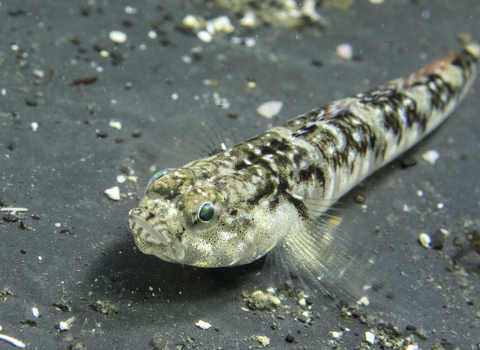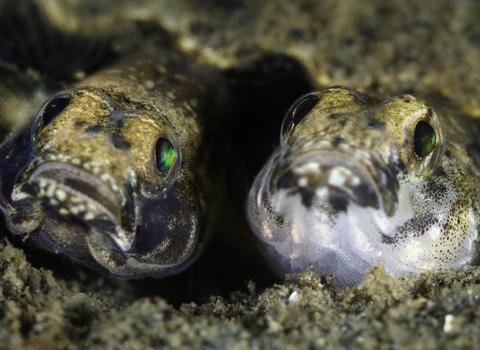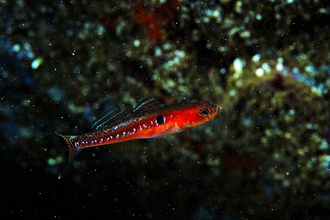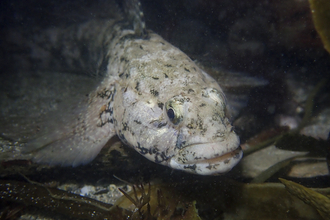
Painted goby © Julie Hatcher

A pair of painted gobies mating and laying eggs in a burrow. The darker coloured fish is the male © Alexander Mustard/2020VISION
Painted goby
This slim fish is usually found on gravelly parts of the seabed, close to shore, but can turn up in rockpools.
Scientific name
Pomatoschistus pictusWhen to see
January to DecemberSpecies information
Statistics
Length: up to 9cm, but usually 6cm or lessLifespan: around 2 years
Conservation status
Common
Habitats
About
The painted goby generally lives close to the shore, in waters ranging from around 1-50 metres deep. They thrive in areas where the seabed is gravelly or covered in coarse sand, with their blotchy patterns helping them to camouflage against the floor. They can sometimes be found in rockpools.Painted gobies have been widely studied for their use of sound. Males compete over nesting sites, defending their territory with displays that involve spreading their fins, quivering their body, and producing bursts of drumming - rapid pulses of low frequency sound. Scientists have found that larger gobies produce longer bursts of drumming, so males can use the sounds to size each other up.
Male painted gobies also use sound to help attract a mate. They create a nest by digging a hole beneath an empty shell, then try to attract a female by pairing more visual displays with a series of drumming and thumping sounds. The more effort a male puts into these displays, the more likely a female is to be impressed. If he's successful, the female will enter the male's nest and lay her eggs, which the male will then look after and guard.





